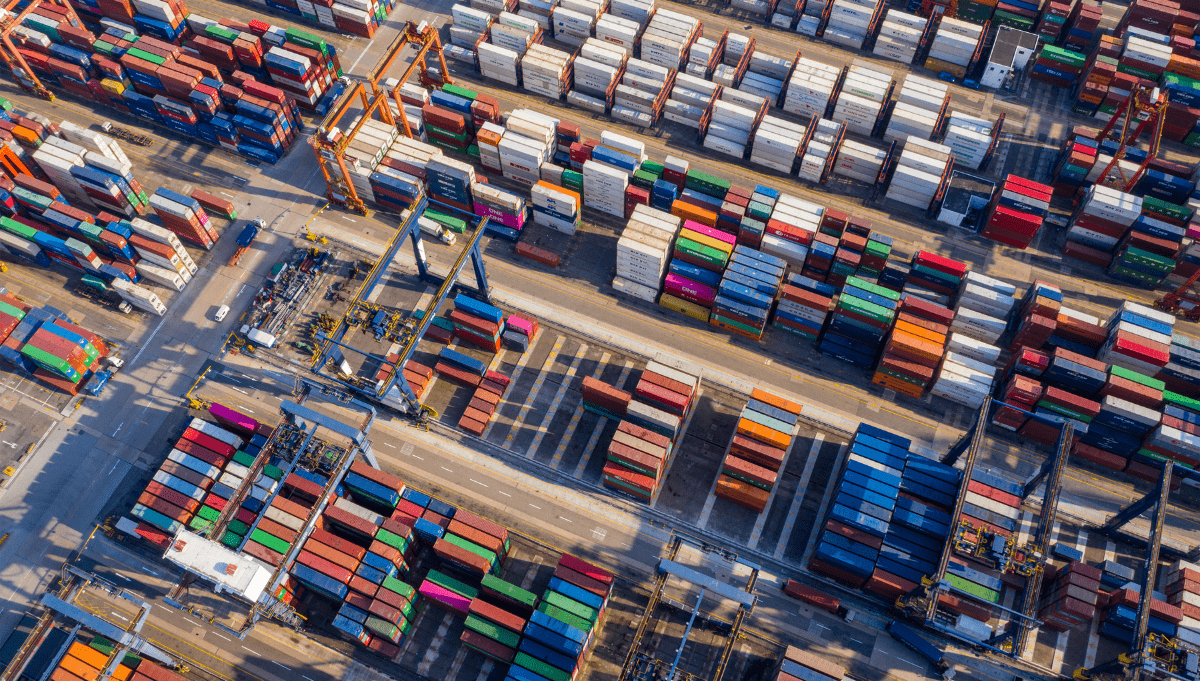
As we continue to grapple with coronavirus, it’s evident that the international eCommerce landscape will never be the same again. Many might assume that the pandemic has prevented retailers from exploring international markets.
>Share this post<

by Lauren Cassidy
April 26, 2021
As we continue to grapple with coronavirus, it’s evident that the international eCommerce landscape will never be the same again. Many might assume that the pandemic has prevented retailers from exploring international markets.
While it has brought its challenges, changing consumer behaviours have also brought new opportunities for retailers. A recent report showed that the most common reason for business failure over the last year was an inability to adapt. Success, for retailers hoping to go international, therefore hinges on their logistics strategy.
Until the pandemic, international eCommerce logistics networks were primarily designed to get goods from warehouses to store shelves. However coronavirus has accelerated eCommerce requirements by almost 5 years, meaning, this already lagging system has had it’s weaknesses exposed and magnified. This has resulted in some significant logistics challenges including: poorly optimised processes, supply chain fluctuation and maintaining reputation.
While it has brought its challenges, changing consumer behaviours have also brought new opportunities for retailers. A recent report showed that the most common reason for business failure over the last year was an inability to adapt. Success, for retailers hoping to go international, therefore hinges on their logistics strategy.
Until the pandemic, international eCommerce logistics networks were primarily designed to get goods from warehouses to store shelves. However coronavirus has accelerated eCommerce requirements by almost 5 years, meaning, this already lagging system has had it’s weaknesses exposed and magnified. This has resulted in some significant logistics challenges including: poorly optimised processes, supply chain fluctuation and maintaining reputation.
Human Error and Process Automation Challenge
Human error is an avoidable part of life. No matter what industry you’re in, a hiccup is inevitable at some stage. The trouble for international retailers, is that a small mistake could result in a significant loss of productivity and profit.
The more information you store and transfer, the likelihood of human error increases. Manually managed processes can also increase costs and are extremely time-consuming. While, automated inventory management is the obvious answer, a little over a third of retailers stated that the main issues that arise with cross-border selling are poor system integrations.
Opportunity
Centralizing all of your information and communications onto one commonly shared logistics platform can massively reduce the chances of human error. Automated tasks reduce the risk of mistakes. Moderate workloads help employees carry out their tasks to a higher standard. It can also provide “one view of the truth” that’s constantly updated with the latest data. This helps enormously with managing data, understanding issues and ensuring all stakeholders understand what’s happening.Supply chain fluctuations
ChallengeThroughout 2020 we saw fluctuations in demand across all industries. As we locked down from March, we saw a sharp rise in the demand for safety equipment, household essentials and homeware. Almost a quarter of British retailers reported severe disruption to their supply of goods. With only 7% of retailers having the flexibility to switch their suppliers.
Many retailers who relied on Amazon for supply also found themselves in bother last year, when the marketplace decided to halt shipments of all goods other than PPE and essential equipment. Therein lies the challenge for retailers who don’t have full control over their supply chain.
Opportunity
Going D2C as an international company can provide retailers with significant control over their supply chain. This also allows brands to boost their online sales even more by getting a clear, first-hand look into their customers’ buying behaviour.
D2C and digitally native brands had the upper hand when it came to responding to the pandemic. They had an ability to fast-track customer engagement initiatives that were already underway pre-covid. As a result, D2C brands surveyed by Totem Media reported 58% fewer sales declines than traditional retailers since the onset of the global health crisis.
Grocery retailers, in particular, dealt with significant out-of-stock situations on many key products as consumers hoover up supplies. Therefore, the ability to predict and manage demand has never been more important. This will involve centralising stock orders, automating order processes and a quality DOM system.
Maintaining reputation
ChallengeHas the pandemic had a massive impact on your customer and the customer relationship? A McKinsey report found that more than 75% of consumers have tried new brands, places to shop, or methods of shopping during the pandemic.
This is down to a number of factors, most notably friction in the supply chain. For example if brands were out of stock of particular items consumers explored new websites/companies to find them. How do you maintain trust in your brand and your products and services and how will you recover the customer experience in the future?
Consumers have become increasingly conscious of their purchasing with lockdown sparking a movement of belief-led buying. A recent study revealed that 75% of consumers are more likely to favour brands with clear and frequent communication during the pandemic. Showing that the consumers are aware and listening.
Opportunity
It is vital for retailers to frequently and consistently update their consumers on store policies, hours, and more to show their commitment to the consumer’s best interests, health, and safety. This communication will build trust and loyalty between the consumer and the retailer.
Retailers also now have the opportunity to ease pressures as consumer behaviours turn towards items arriving on time instead of “the next day”. With more people working from home, windows for delivery are much broader – in fact, only 3% of shoppers state “next-day delivery” a must have. However, 96% of shoppers want tracking notifications on their deliveries, which means there’s been a shift from speed to reliability.
Retailers should assess their warehouse management systems and make improvements towards order track-ability from all points of sales (POS). This will result in visibility over customers’ orders ensures a smooth customer experience.
If international retailers can create an ethical, transparent and reliable journey, they are on to a winner.
Takeaways
Retailers should no longer be weary of the idea of global expansion in a pandemic. We have come a long way since March 2020 and while the aftershocks are still being felt, the key issues are exposed and ready to be adjusted.In fact, retailers can now be hopeful that with the accelerated shift to eCommerce the means for improving their logistic strategies are readily available. Optimisation, demand and reputation can be easily managed with powerful eCommerce platforms. Retailers should take the time to ensure that their eCommerce are flexible and ready to grow with them.
More to explore
In the next few years, we are foreseeing an impressive increase for the global retail industry. While this can be beneficial for the global eCommerce industry, it also means that there will be more competition, as well.
European Data Protection rules were launched back in 2018, to protect the confidentiality of our personal data but even four years later, there is still a lack of understanding among companies and consumers about how to comply with the best practices. Big tech companies, like Google or Amazon, usually refer to the acronym GDPR, to explain the rules that verify the data, so it is not used inappropriately, but to add details to create confusion.



